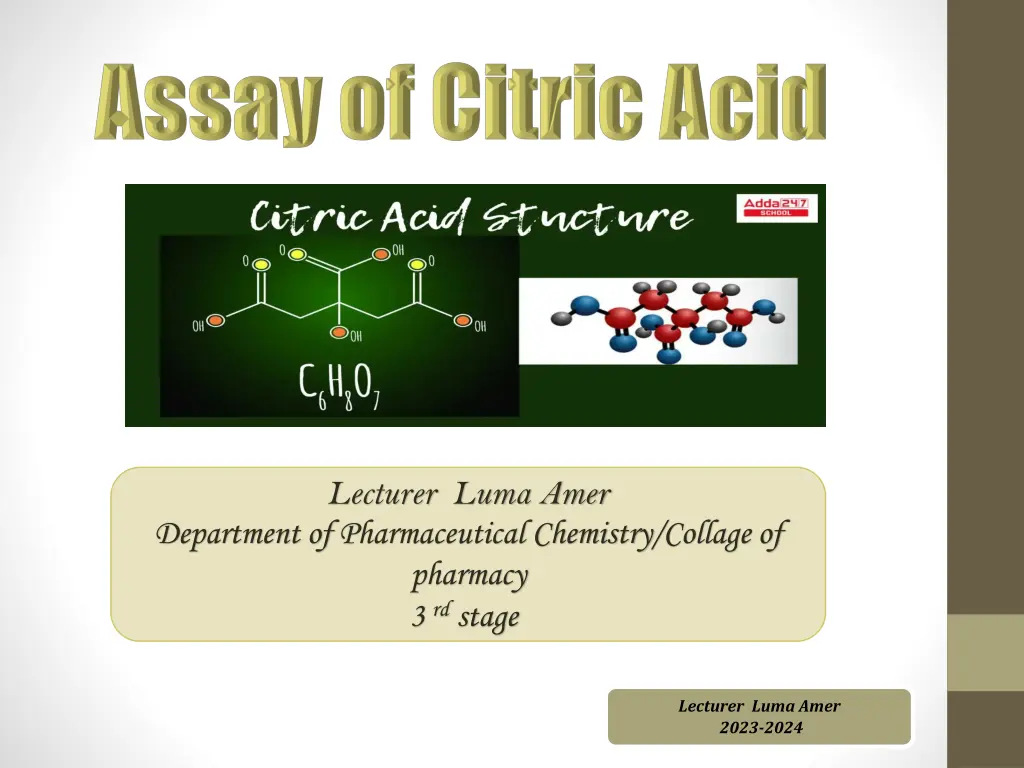
Citric Acid: Properties, Uses, and Titration Method
Explore the characteristics of citric acid, its applications in various industries, and the titration method used to determine its concentration. Citric acid, a weak organic acid found in citrus fruits, plays a vital role in effervescent salts and kidney stone dissolution. Learn about its chemical formula, structural formula, and practical calculations for determining its content in a sample.
Download Presentation

Please find below an Image/Link to download the presentation.
The content on the website is provided AS IS for your information and personal use only. It may not be sold, licensed, or shared on other websites without obtaining consent from the author. If you encounter any issues during the download, it is possible that the publisher has removed the file from their server.
You are allowed to download the files provided on this website for personal or commercial use, subject to the condition that they are used lawfully. All files are the property of their respective owners.
The content on the website is provided AS IS for your information and personal use only. It may not be sold, licensed, or shared on other websites without obtaining consent from the author.
E N D
Presentation Transcript
Lecturer Luma Amer Department of Pharmaceutical Chemistry/Collage of pharmacy 3 rd stage Lecturer Luma Amer 2023-2024
Introduction Citric acid (C6H8O7, m. wt. = 192.09) is a white crystalline powder . It is very soluble in water and freely soluble in alcohol. its solutions are strongly acidic ? Citric acid is a weak organic acid found naturally in citrus fruits such as lemons and oranges. Citric acid also finds applications in pharmaceuticals, cosmetics, and various industrial processes.
Citric acid is commonly used in effervescent salts because it releases carbonates. It is also used to dissolve kidney stones. Citric It has a sour taste. It is available as the anhydrous form or monohydrate form. Assay of citric acid is based on the anhydrous form. it is a naturally occurring component of metabolism in almost all living things.(Krebs cycle).
Chemical formula C6 H8 O7 (anhydrous) C6 H8 O7 H2O (monohydrate) Structural formula 192.1 g / mol
Chemical principle Titration Method help to determine the concentration or purity of citric acid in a given sample. Since citric acid has strong acid properties, it is titrated against a standard basic solution like 0.5N NaOH solution in an acid- base reaction using phenolphthalein solution as the indicator
procedure 1- Transfer 10 ml of un known (citric acid solution ) to conical flask . 2- Add 1-2 drop of ph.ph. Indicator. 3- start titration with (0.5) NaOH solution, until you get a faint pink color. titration apparutus
Calculations Calculate the Wt. practical of citric acid in your sample. Calculate the normality and the molarity in your sample If you know that: (C6H8O7, m. wt. = 192.09 g / mol)






















